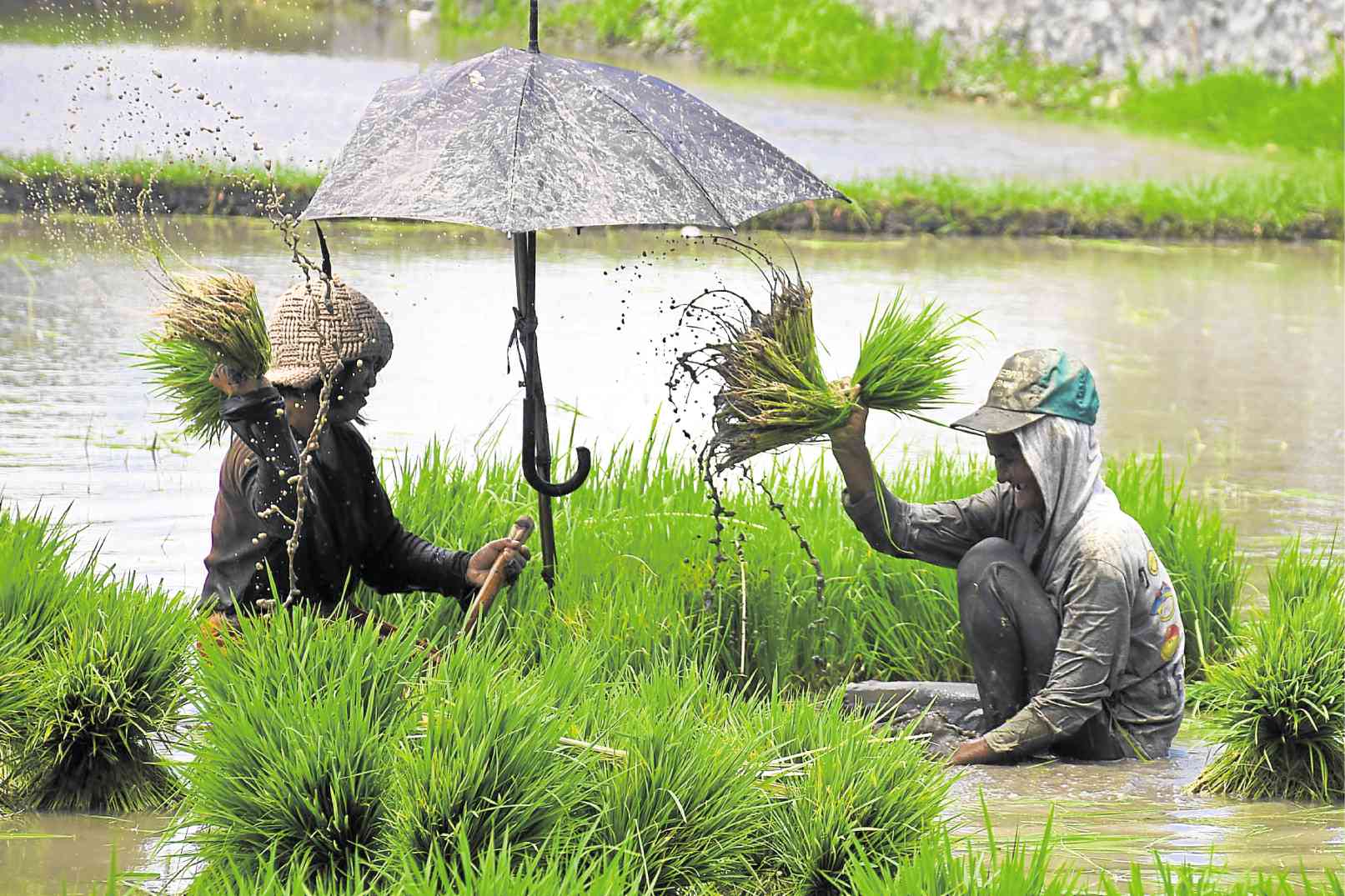Rice sufficiency goals set in Central Luzon

FIELD WORK With the return of rains, field work has taken precedence in rice-producing provinces, including this farm in Bugallon town in Pangasinan province. WILLIE LOMIBAO/INQUIRER NORTHERN LUZON
CITY OF SAN FERNANDO—The Department of Agriculture (DA) in Central Luzon has set a target yield of 5 metric tons (MT) of rice a hectare to make that crop sufficient under the Duterte administration.
Government subsidies on quality seeds and fertilizers through the 2017 budget would make the target attainable by 2018, Andrew Villacorta, the department’s regional director, said on Monday.
Rice farms in Aurora, Bataan, Bulacan, Pampanga, Tarlac and Zambales provinces produce an average of 4.5 MT per hectare, which is higher than the national average of 3.9 MT.
Nueva Ecija harvests between 7 and 12 MT due to the use of certified or hybrid seeds. Farmers there use 8 to 12 sacks of fertilizer per hectare, Villacorta said.
Central Luzon has a surplus of rice, he said. From the 3.4 million MT produced in the region in 2015, only 2 MT were consumed.
Article continues after this advertisementWith a higher production target, seed growers would need to meet the government’s requirement in the dry season before October next year.
Article continues after this advertisementCentral Luzon has 180,944 ha of rice lands, fed by water from dams and rain.
In Pangasinan province, the country’s third biggest rice producer next to Nueva Ecija and Isabela provinces, agriculture officials said they saw no problem maintaining the Ilocos region’s high self-sufficiency rating in rice production until 2018.
Ihe Ilocos region is 180 percent rice self-sufficient, producing almost 10 percent of the country’s total rice production, said Gloria Parong, information officer of the DA Ilocos office.
With more irrigation projects to be completed this year, rice farmers would be able to plant twice or thrice a year, she said.
Pangasinan harvested 1.07 MT last year, making it 200 percent self-sufficient, said Nestor Batalla, assistant provincial agriculturist.
“Even when our farmers sell their produce to other provinces, we still have enough for our consumption,” he said.
Pangasinan farmers plant palay on 183,774 ha of farm lands. They expect their 2016 yield to be 2 percent higher than last year’s harvest, Batalla said.
Once the P2.6-billion Agno River irrigation system extension project is completed this year, an additional 13,000 ha of rice fields would be irrigated, he said.
Batalla said about 70 percent of Pangasinan farmers use certified seeds which increase rice yield by 12 percent a hectare. Tonette Orejas, Inquirer Central Luzon, and Gabriel Cardinoza, Inquirer Northern Luzon